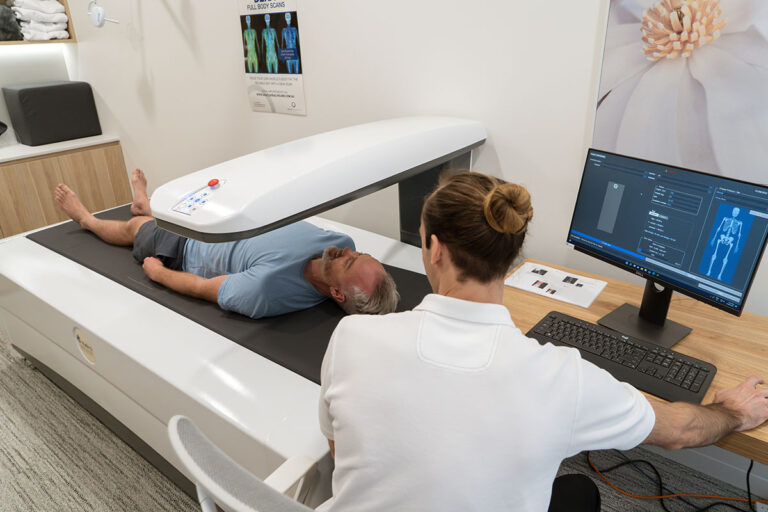We have all heard that heart disease, diabetes, obesity, mental health and cancer are all major issues facing our community. These diseases place enormous pressure on our healthcare system as well as on individuals themselves. Working face-to-face with people from all walks of life has highlighted to me that exercise and better lifestyle choices play a significant role in preventing and managing chronic disease (Department of Health, 2021).
Heart Disease
Did you know that heart disease is the leading cause of death worldwide (WHO, 2020), including high blood pressure, heart attack, and strokes. 95% of people in The National Health and Nutrition Examination Survey (Liu Y, 2019) increased their heart-related mortality risk when they did not meet the Physical Activity Guidelines (NHANES, 2015).
These guidelines include:
- 150 minutes of moderate-level aerobic activity for health outcomes. Moderate level of activity includes things like brisk walking, walking up and down hills, freestyle swimming and cycling where you are huffing and puffing for an extended period (30-60 minutes).
OR
- 75 minutes of vigorous aerobic activity per week for body composition changes and fitness improvements. Vigorous activity includes things like higher intensity sports (tennis/soccer/boxing class), intervals with bikes/rowing machines/running where you are really working hard and can’t sustain for too long.
Another study showed that even resistance training (body weights/free weights/machine weights) reduces heart-related deaths by 40-70% (Mckinney J, 2016). The even better news is that this resistance training can be short and sharp – just 1-3 x weekly under 60 minutes per session to reap these benefits. If you aren’t doing any resistance exercise in your current routine, try doing body weight movements like squats, lunges, step-ups, sit-ups, planks and push-ups to work your muscles and build strength with the added bonus of looking after your heart!
Diabetes
Type 2 Diabetes is a preventable chronic disease that affects millions of people worldwide. A randomized control trial (National Cancer Institute, 2020) found that people who achieved the right amount of moderate and vigorous activity each week reduced their incidence of diabetes by 58%, as well as decreased their body weight by 7%. This group was compared to a control group that was put on a diabetes medication called Metformin. This medication group also saw a positive reduction in the incidence of Diabetes, but it was only 31% compared to the 58% seen with exercise and dietary interventions. In conversation with your doctor, exercise should be strongly considered as an alternative or adjunct to medication alone.
Cancer
Cancer is another chronic disease that can be prevented by regular exercise. A study published in the Journal of the National Cancer Institute found that individuals who engaged in regular exercise and were considered “fit” had a much lower risk of developing cancer overall (JAMA, 2022). Moreso, a recent meta-analysis (JAMA, 2022) confirmed that fitness is inversely related to cancer mortality, meaning that those who are “most fit” have a 45% reduced risk of cancer death compared with their “unfit peers”. Being fit also plays an enormous role in how well people with cancer can tolerate chemotherapy and all its side effects (Bland, 2019).
Mental Health
Regular exercise can improve mental wellbeing and reduce the risk of mental health conditions such as depression and anxiety. The JAMA, 2022 study showed that there is a dose-related response between exercise and the incidence of depression.
The more you exercise, the lower your rates of developing depression will be. The less active you are, the more at risk you are of developing depression.
The JAMA 2022 study showed that accumulating 2.5 hours of brisk walking per week is associated with a 25% lower risk of depression, while 1.25 hrs of brisk walking per week is associated with an 18% lowers risk of depression, as compared to no structured walking. Another study in the Lancet Psychiatry (Lancet, 2018) showed that people who exercise had 43.2% fewer days of poor mental health in the last month than those who did not exercise.
Putting it All Together
Exercise is my form of prescribed medicine. If you could bundle the benefits of exercise up into a pill and sell it, everyone would be lining up to buy it.
The best place to start to decrease your risk of developing chronic disease is to check whether you are meeting the Australian Activity Guidelines here: https://www.health.gov.au/topics/physical-activity-and-exercise/physical-activity-and-exercise-guidelines-for-all-australians/for-adults-18-to-64-years
If you aren’t currently meeting them, that’s okay! Try to add some structured movement into your weekly routine. Even adding in a lunch time walk, some body weight exercises on a couple days a week, or engaging with a local Exercise Physiologist if you need more guidance on what exercise is the BEST for your body and health history.
References
American Heart Association. Last Reviewed: Apr 18, 2018. https://www.heart.org/en/healthy-living/fitness/fitness-basics/aha-recs-for-physical-activity-in-adults
Bland, K. A., Zadravec, K., Landry, T., Weller, S., Meyers, L., & Campbell, K. L. (2019). Impact of exercise on chemotherapy completion rate: A systematic review of the evidence and recommendations for future exercise oncology research. Critical reviews in oncology/hematology, 136, 79-85.
Department of Health, 2021. National Preventive Health Strategy 2021–2030
JAMA Psychiatry. Association Between Physical Activity and Risk of DepressionA Systematic Review and Meta-analysis. April 13, 2022. Matthew Pearce, PhD1; Leandro Garcia, PhD1,2; Ali Abbas, PhD1; et alTessa Strain, PhD1; Felipe Barreto Schuch, PhD3; Rajna Golubic, PhD1,4; Paul Kelly, PhD5; Saad Khan, MB,BChir6; Mrudula Utukuri, MB,BChir6; Yvonne Laird, PhD7,8; Alexander Mok, PhD1,9; Andrea Smith, PhD1; Marko Tainio, PhD1,10,11; Søren Brage, PhD1; James Woodcock, PhD1. https://jamanetwork.com/journals/jamapsychiatry/fullarticle/2790780
Med Sci Sports Exerc. Published 2019 March. Yanghui Liu, MSc,1 Duck-chul Lee, PhD,2 Yehua Li, PhD,3 Weicheng Zhu, MSc,4 Riquan Zhang, PhD,1 Xuemei Sui, MD, PhD,5 Carl J. Lavie, MD,6 and Steven N. Blair, PED7 . https://www.ncbi.nlm.nih.gov/pmc/articles/PMC7385554/
National Cancer Institute. Reviewed: February 10, 2020. https://www.cancer.gov/about-cancer/causes-prevention/risk/obesity/physical-activity-fact-sheet
The health benefits of physical activity and cardiorespiratory fitness. BC medical journal vol. 58 no. 3, april 2016. James McKinney, MD, MSc, Daniel J. Lithwick, MHA, Barbara N. Morrison, BHK, Hamed Nazzari, MD, PhD, Saul H. Isserow, MBBCh, Brett Heilbron, MB ChB, Andrew D. Krahn, MD. https://bcmj.org/sites/default/files/BCMJ_Vol58_No_3_cardiorespiratory_fitness.pdf
The Lancet Phsyiactry. Volume 5, Issue 9, September 2018, Pages 739-746. Association between physical exercise and mental health in 1·2 million individuals in the USA between 2011 and 2015: a cross-sectional study. R Chekroud BA a, Prof Ralitza Gueorguieva PhD b d, Amanda B Zheutlin PhD f, Prof Martin Paulus MD g, Prof Harlan M Krumholz MD SM c h i, Prof John H Krystal MD e j k, Adam M Chekroud PhD d e l . https://www.sciencedirect.com/science/article/abs/pii/S221503661830227X
The NHANES Study.Associations of Objectively Assessed Physical Activity and Sedentary Time with All-Cause Mortality in US Adults: 13/04/2015. Daniela Schmid , Cristian Ricci, Michael F. Leitzmann. https://doi.org/10.1371/journal.pone.0119591
World Health Organisation, 2020. https://www.who.int/news-room/fact-sheets/detail/the-top-10-causes-of-death



